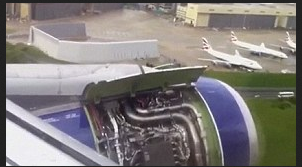if you're a nacelle designer, then I'd expect you think the issues are significant. I'm sure there are tricky design problems to solve.
for me, I can't help but remember, when the talk turns to nacelles, about my P.Eng board interview. The local professional engineer association wanted me to do a bunch of exams 'cause I had the nerve to get my degree in a foreign country. I said (surprisingly nicely) "no way, I've been working for something like 20 years ..." so they said "ok, we'll do a board interview". so I sat down with three of their guys to talk over the work I'd done. one topic was (yes, you guessed it) nacelles. one interviewer, not familiar with the subject matter, unwisely asked "I'm not familiar with the term". I replied (equally unwisely) "they're where the engines are, like on Star Trek". surprisingly, they accepted me into their association ...
another day in paradise, or is paradise one day closer ?


![[smile] [smile] [smile]](/data/assets/smilies/smile.gif)
